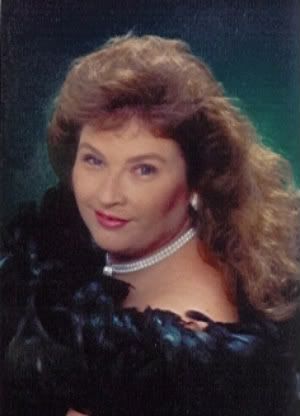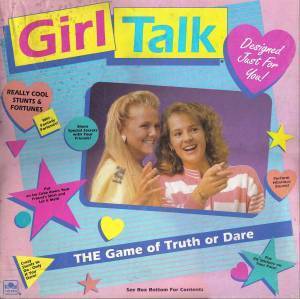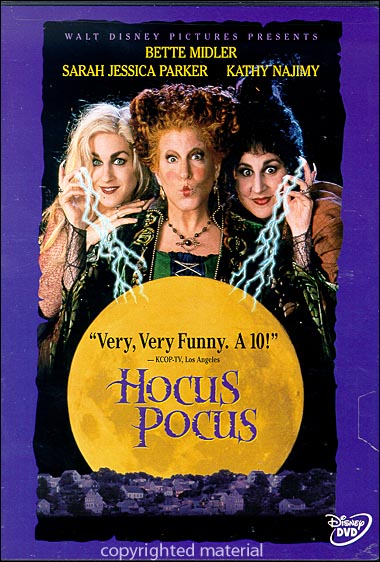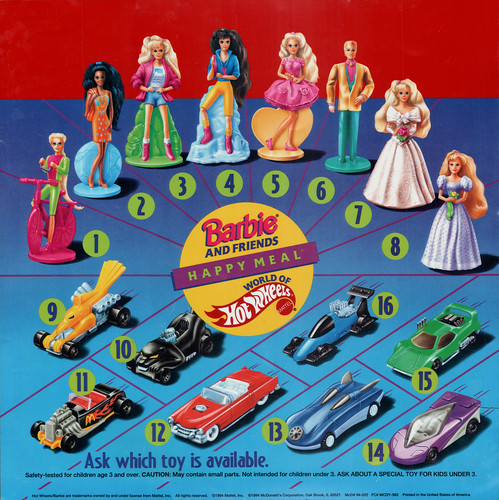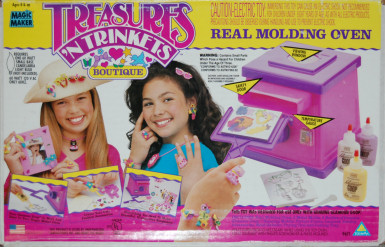
Note: I don't actually know any of the lucky stars of these Glamour Shots portraits, we were simply introduced through our mutual friend Google Images. If any of them are of you, well, then...I'm sorry. On so many levels.
It's always been a dream of mine to shell out fifty bucks for some underpaid mall clerk with three weeks beauty school experience to JonBenet Ramsey-ify me for photographic posterity. Call me sentimental, but I just can't think of any way I'd rather be remembered than wearing a feather boa, my wash-out perm blowing in the wind machine-generated breeze. In soft focus, of course.
In the 80s and 90s, Glamour Shots photography studio franchises were cropping up at malls across the country. Glamour Shots studios convinced us that all we needed to infuse a little glamor into our lives was a string of fake pearls, a cowboy hat, and a blurred camera lens, prompting women everywhere to whip out their faux leather checkbook wallets for a piece of the action. There was just something inexplicably irresistible about the opportunity to appear back-lit in an off the shoulder sequined gown.
The Glamour Shots experience was intended to make everyday average women feel like models at a photo shoot. For some clients this was more of a stretch than others, but our chipper mall stylists were more than up for the challenge. After a few hours in hair and makeup, anyone could look fabulous. Or at least that was the idea.

Unfortunately, this notion worked far better in theory than in practice. The studio's main clientele was made up of middle aged women, most of whom sought to take some non-racy but nevertheless boudoir-esque photos for their husbands. Glamour Shots took a distinctly one-size-fits-all approach to their model-style photo shoots, meaning their stylists were probably only trained in a single technique.
That must have been the case, as I'm not quite sure how else you could account for the sweeping uniformity of looks for Glamour Shots clients* nationwide. There were a few not-so-secret ingredients that formed the underpinnings of every Glamour Shots session throughout the decade, the most obvious of which was the enormous mall hair. It shouldn't have come as such a surprise considering the shoots did indeed take place within the confines of a mall environment, but I doubt any of these housewives went in asking for the Tiffany.
The next ingredient in our Glamour Shots recipe for alleged success was the ubiquitous presence of all things sparkly. Be it enormous earrings, a sequined jacket, or a bedazzled headpiece, each Glamour Shots studio followed the mantra of shiny equals universally flattering. It's a well known fact that not every woman is meant to wear a gold lame gown. When paired with oversized glasses and a portly figure, these dress-up implements could be more of a curse than the gift they'd claimed to be on the certificate in your Mother's Day card.
The final and most critical element of any Glamour Shot worth its weight in retouching equipment was the almighty signature pose. Aside from the usual hand-shelf-chin-support pose we saw at photography studios everywhere, we had some distinct poses that were pure GS through and through.
There were a few poses in particular that these studios were especially partial to, most often the over the shoulder smoldering gaze. Again, while this may have been a prime way to showcase the aesthetically pleasing attributes of an actual fashion model, it had a uniquely comical effect when applied to your grandmother.
The head tilt was another popular choice, giving the subject a look somewhere between deep thought and mild confusion:
And of course, our classic "grab-part-of-your-shirt/feather boa" pose:
In the luckiest of client cases, you may have been subjected to all three, also known as the Triple Crown. Okay, I just made that up, but it would have been a totally apt descriptor in its time. I'm standing behind it. Actually, I'm crouching behind it in a three-quarter profile with a half head tilt, but same difference.

The holy grail of Glamour Shots posing: with our pose powers combined, who knows what we might unleash in this smirking housewife
As children, many of us begged tirelessly for our own opportunity at being shot glamorously, and many of our parents were wise enough to deny us this fleeting pleasure. The desire for these photos peaked right about at the same pubescent time as the height of adolescent awkwardness, meaning these photos would be a testament to our largest glasses and most prominent acne.
Especially in the midst of the JonBenet Ramsey murder case, it was considered less than good form to doll up your daughter in all the finery mall photography studios could muster, particularly if they involved a sparkly cowboy hat of any kind. Pageant moms may have embraced the opportunity with open arms, but these over done-up preteens were at best unsettling to the general public.
For those parents who gave in to their teenage children's whinings for Glamour Shots, congratulations. Your scrapbook contains the ultimate blackmail tool against your child. Daughter forget your birthday? Time to take out that scanner and release these bejeweled cowboy hat-tipping beauties into the Facebook wild. There is probably nothing in the world more certain to humiliate them than an unwelcome trip down a softly focused memory lane paved with sequins and hot rollers.
To my loyal readers, I pose to you** the following challenge. If any of you (or your briefly glamorous family members) ever had Glamour Shots taken, I implore you to email them to childrenofthe90s@gmail.com. Please, sacrifice yourself on the altar of shame and allow others to join in your humorous commiseration. I promise to give them the ultimate Children of the 90s mocking treatment and to open it up to reader votes for the best Glamor Shot. I might even throw in a prize. So get to it, children of the 90s. Track down those embarrassing mall studio photographs, throw 'em on the scanner, and let the fun begin.
*Now known as "victims"
**Get it? Pose?

